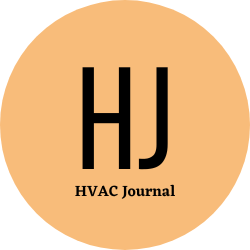HVAC (Heating, ventilation and air conditioning) systems
by siteadmin

HVAC (heating ventilation and air conditioning systems) are essential in large buildings, such as hospitals and schools, as well as homes.
A HVAC system is composed of six main parts. A trade school HVAC program can teach students about how these components work together and how they function, as well how to diagnose, troubleshoot, and repair them.
Air Conditioning
HVAC systems are essential for keeping your home cool by exchanging warm, humid indoor air with cooler, dryer outdoor air. This helps prevent mold growth, which could otherwise cause structural damage and health problems.
The cooling and heating components of an air conditioning system can be separated. The cooling system is located outside your home and uses fans and a blower to distribute cooled ductwork throughout your system.
The thermostat is what controls the heating and cooling of HVAC systems. Regular maintenance is essential to keep an HVAC system running smoothly. This prevents small problems from becoming expensive repairs and keeps everything operating smoothly.
Furnace
Furnaces produce heat by burning fuels such as propane or natural gas, and then distributing it throughout your house through vents. Gas or electric furnaces, or dual fuel systems that combine both, are available.
Air conditioners are an essential part of any HVAC system. They absorb, transport, and discharge heat, allowing your home to be comfortable. They are powered by a compressor, evaporator coil, and fan motor. This helps circulate warm and cool air in your home.
Thermostat
A thermostat is an electronic device that controls and monitors the temperature of physical systems. It does this by sensing temperature fluctuations and taking action to maintain the environment within preset limits. Most thermostats are also programmable.
Many models have a small button or switch to set the air conditioner to cool. You should press or move it until the display shows a number that corresponds to the ambient temperature of your home.
Programmable thermostats have several settings including "sleep time" and temperature settings that can save you money and energy when you sleep at night. You can also schedule when you will be gone and what temperature you want your system to be at during the week.
Evaporator Coil
The cooling of an air conditioner is based on the evaporator coils. These copper coils are located within the indoor air handler unit or cooling unit. They connect directly to the extremely cold refrigerant flowing out of its source in order to maintain its temperature.
The blower fan draws warm air from your home over an evaporator coil which absorbs it, and cools the refrigerant. As the air passes over these coils, water vapor condenses and helps reduce humidity in your home.
Keep your evaporator coil clean to get the most out of it. Heat transfer is reduced when dust and gunk build up on the coil. This forces your system to use additional energy to meet thermostat settings. It's important that you and your HVAC provider set up a maintenance plan together.
Ductwork
The term ductwork refers to a network of tubes or conduits used to distribute the air from furnaces and air conditioning units to all parts of the house. When designed and installed properly, ductwork can provide energy efficiency and comfort at a reasonable price.
Ductwork is the term used to describe vents installed in walls, ceilings and floors to bring air conditioning to living spaces. Most ductwork is made of rigid sheet metal, which helps to maintain a constant temperature and limit airflow restrictions. It should be regularly checked for any cracks or holes that could rob the conditioned air from its benefits. Periodic duct cleaning is recommended to prevent the loss of conditioned indoor air due to holes or cracks. Other types of ductwork are take-offs, which divert small portions from main duct flows to branch ducts. Turning vanes minimize resistance. Volume control dampers can be manually or automatically adjusted for optimal temperature regulation.
https://www.hvacsaltlakecityut.com/
heat pump installation salt lake ut
heat pump installation north salt lake ut
HVAC (heating ventilation and air conditioning systems) are essential in large buildings, such as hospitals and schools, as well as homes. A HVAC system is composed of six main parts. A trade school HVAC program can teach students about how these components work together and how they function, as well how to diagnose, troubleshoot, and repair…
Recent Posts
- Condon Total Comfort, Inc.: Your Trusted Partner for AC Repair and Heating Solutions in Ripon and Berlin
- How Botox Can Improve Your Confidence in Houston
- How to Handle Repairs in Between Your WV State Inspections
- Brighten Up Your Holidays with the Best Christmas Light Installer in Helena, MT
- Leading the Way in Hydro Jetting and Plumbing Services Across Houston, Pearland, Deer Park, and Friendswood
